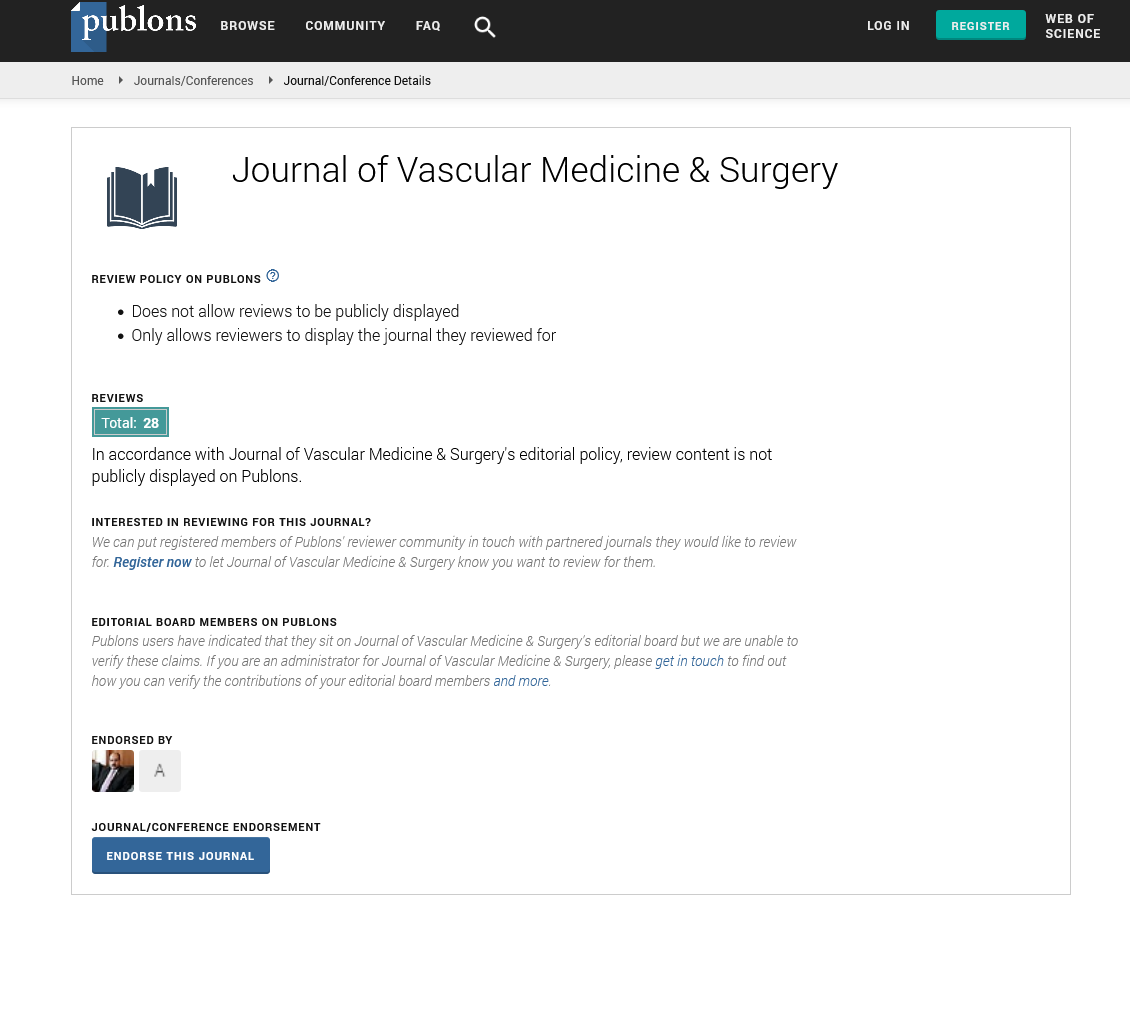Indexed In
- Open J Gate
- Academic Keys
- RefSeek
- Hamdard University
- EBSCO A-Z
- OCLC- WorldCat
- Publons
- Euro Pub
- Google Scholar
- SHERPA ROMEO
Useful Links
Share This Page
Journal Flyer

Open Access Journals
- Agri and Aquaculture
- Biochemistry
- Bioinformatics & Systems Biology
- Business & Management
- Chemistry
- Clinical Sciences
- Engineering
- Food & Nutrition
- General Science
- Genetics & Molecular Biology
- Immunology & Microbiology
- Medical Sciences
- Neuroscience & Psychology
- Nursing & Health Care
- Pharmaceutical Sciences
Opinion Article - (2024) Volume 0, Issue 0
Heart Disease, its Causes, Risk Factors and Classifications to Prevent, it is Essential for Maintaining Heart Health and Decreasing the Impact of Cardiovascular Disease
Blandine Khairy*Received: 29-Jul-2024, Manuscript No. JVMS-24-26834; Editor assigned: 31-Jul-2024, Pre QC No. JVMS-24-26834 (PQ); Reviewed: 14-Aug-2024, QC No. JVMS-24-26834; Revised: 21-Aug-2024, Manuscript No. JVMS-24-26834 (R); Published: 30-Aug-2024, DOI: 10.35248/2329-6925.24.S23.553
Description
Heart disease is a major cause of mortality around the world, affecting millions of people in a year. It encompasses a wide range of conditions that affect the heart's structure and function, including coronary artery disease, heart attacks, arrhythmias and heart failure. Heart disease, also known as Cardiovascular Disease (CVD), refers to a variety of conditions that impair the heart's ability to function effectively. It mainly involves the narrowing or blockage of blood vessels, which can lead to chest pain (angina), heart attacks or strokes. Heart disease also includes conditions that affect the heart's muscle, valves or rhythm, leading to various complications.
Common types of heart disease
There are multiple types of heart disease, each with its distinctive characteristics and effects on the heart.
Coronary Artery Disease (CAD): The most common type of heart disease, CAD occurs when the coronary arteries that supply blood to the heart muscle become narrowed or blocked due to the development of cholesterol and plaque. This condition can lead to chest pain, heart attacks and other serious complications.
Heart attack (myocardial infarction): A cardiovascular stroke occurs when a blood vessel blockage prevents the circulation of the heart muscle, causing tissue damage or mortality. It is frequently represents the result of major coronary artery disease and it can be recognized by symptoms such as pain in the chest, difficulty of breath and nausea.
Heart failure: Heart failure is a condition in which the heart is unable to pump blood efficiently, leading to an accumulation of fluid in the lungs and other parts of the body. It can be caused by reducing heart muscle from heart attacks, high blood pressure or other cardiac diseases.
Arrhythmias: Arrhythmias are irregular heartbeats that can occur when the electrical signals that control the heart's rhythm become affected. They can range from harmless (such as occasional palpitations) to life-threatening (such as ventricular fibrillation, which can lead to sudden cardiac arrest).
Valvular heart disease: This disorder is caused by damage or failures affecting one or more of the heart's valves, which regulate blood flow within the heart. Valvular heart disease can lead to heart murmurs, fatigue and heart failure.
Cardiomyopathy: It is a condition of the cardiac muscle that causes it to develop, improve texture and reducing the heart's ability to circulate blood. It can be genetic or result from other conditions such as high blood pressure or chronic alcohol use.
Congenital heart defects: Congenital heart defects are complications with the heart that occur at childbirth. They can range from small defects that do not cause symptoms to severe conditions that require surgical intervention.
Causes and risk factors
Heart disease is frequently resulting of a combination of genetic, lifestyle and environmental factors. Important causes and risk factors include: Hypertension or high blood pressure, increases the stress on the heart and reduces blood vessels, resulting in a significant risk factor for heart disease. Elevated levels of Low- Density Lipoprotein (LDL) cholesterol contribute to the accumulation of plaque in the arteries, leading to coronary artery disease and heart attacks. Smoking damages the inner layer of the arteries, reduces oxygen in the blood and increases blood pressure and heart rate, significantly raising the risk of heart disease. High levels of sugar in the blood associated with diabetes it can damage blood vessels and nerves that regulate the heart and increasing the risk of heart disease. Excess body weight, particularly around the abdomen, it is associated with higher cholesterol levels, increased blood pressure.
Citation: Khairy B (2024). Heart Disease, its Causes, Risk Factors and Classifications to Prevent it is Essential for Maintaining Heart Health and Decreasing the Impact of Cardiovascular Disease. J Vasc Surg. S23:553.
Copyright: © 2024 Khairy B. This is an open access article distributed under the terms of the Creative Commons Attribution License, which permits unrestricted use, distribution, and reproduction in any medium, provided the original author and source are credited.

